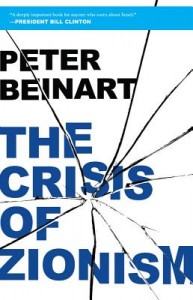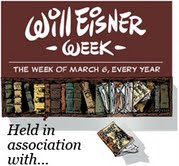The CIA, Patron of Abstract Expressionism
 Hiding in plain sight is confirmation in a 1995 story from Britain’s Independent newspaper that after WW II and continuing on throughout the ’50s the CIA promoted Abstract Expressionism, ostensibly to show America’s openness to cultural variety, as compared with the rigid Constructivism in Soviet arts. I had somehow missed the story by reporter Frances Stonor Saunders, which, thanks to fellow Tweeps @nwoah and @roc_cayard, resurfaced this evening on Twitter. Among many fascinating revelations it reports that
Hiding in plain sight is confirmation in a 1995 story from Britain’s Independent newspaper that after WW II and continuing on throughout the ’50s the CIA promoted Abstract Expressionism, ostensibly to show America’s openness to cultural variety, as compared with the rigid Constructivism in Soviet arts. I had somehow missed the story by reporter Frances Stonor Saunders, which, thanks to fellow Tweeps @nwoah and @roc_cayard, resurfaced this evening on Twitter. Among many fascinating revelations it reports that
In 1958 the touring exhibition “The New American Painting”, including works by Pollock, de Kooning, Motherwell, [Rothko] and others, was on show in Paris. The Tate Gallery was keen to have it next, but could not afford to bring it over. Late in the day, an American millionaire and art lover, Julius Fleischmann, stepped in with the cash and the show was brought to London. The money that Fleischmann provided, however, was not his but the CIA’s. It came through a body called the Farfield Foundation, of which Fleischmann was president, but far from being a millionaire’s charitable arm, the foundation was a secret conduit for CIA funds. So, unknown to the Tate, the public or the artists, the exhibition was transferred to London at American taxpayers’ expense to serve subtle Cold War propaganda purposes. A former CIA man, Tom Braden, described how such conduits as the Farfield Foundation were set up. “We would go to somebody in New York who was a well-known rich person and we would say, ‘We want to set up a foundation.’ We would tell him what we were trying to do and pledge him to secrecy, and he would say, ‘Of course I’ll do it,’ and then you would publish a letterhead and his name would be on it and there would be a foundation. It was really a pretty simple device.” Julius Fleischmann was well placed for such a role. He sat on the board of the International Programme of the Museum of Modern Art in New York–as did several powerful figures close to the CIA.
Eisenhower-era support of boundary-busting art seems ironic now, but the article also points out the truth that the CIA, notwithstanding its Cold Warrior status, it
sponsored American jazz artists, opera recitals, the Boston Symphony Orchestra’s international touring programme. Its agents were placed in the film industry, in publishing houses, even as travel writers for the celebrated Fodor guides. And, we now know, it promoted America’s anarchic avant-garde movement, Abstract Expressionism.
In this regard, I recall that the first publishing house I worked for in New York was Walker & Company, whose founder Samuel Walker was long rumored to have been a member of OSS during the war, the CIA’s forerunner, and involved with Radio Free Europe during the Cold War. I remember seeing books in the Walker company library, titles published in the ’50s and ’60s, that were labeled as printed in Poland, suggesting to me that the company still had some level of involvement with America’s outreach to Eastern Europe during the Cold War. This may even explain how Walker happened to be the first American publisher of John Le Carre bringing out Call for the Dead in 1961 and The Spy Who Came in From the Cold in 1963, long before he was well known.

 #FridayReads The New Yorker‘s excerpt from Robert Caro’s fourth volume in his long-running LBJ bio. Powerful narrative of the day JFK was killed and LBJ took office, and how this picture came to be taken by WH photographer Cecil Stoughton. As readers of this blog may recall, I’ve had opportunities to
#FridayReads The New Yorker‘s excerpt from Robert Caro’s fourth volume in his long-running LBJ bio. Powerful narrative of the day JFK was killed and LBJ took office, and how this picture came to be taken by WH photographer Cecil Stoughton. As readers of this blog may recall, I’ve had opportunities to 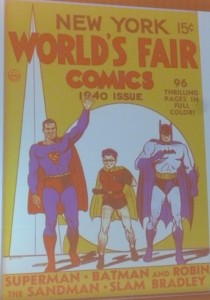
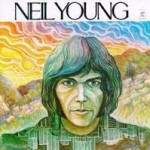


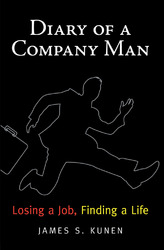 #FridayReads–DIARY OF A COMPANY MAN: Losing a Job, Finding a Life by James S. Kunen, whose Strawberry Statement: Notes of a College Revolutionary was a key 1960s text. After he was laid off from his corporate job in February 2008, Kunen describes himself as too young to retire, too old to hire. I’m still reading that first section of the book, over the weekend I’ll read how he weathers the storm of disemployment and comes out somewhere on the other side. Having experienced my own layoff, Kunen’s is a pitch-perfect rendering of the experience.
#FridayReads–DIARY OF A COMPANY MAN: Losing a Job, Finding a Life by James S. Kunen, whose Strawberry Statement: Notes of a College Revolutionary was a key 1960s text. After he was laid off from his corporate job in February 2008, Kunen describes himself as too young to retire, too old to hire. I’m still reading that first section of the book, over the weekend I’ll read how he weathers the storm of disemployment and comes out somewhere on the other side. Having experienced my own layoff, Kunen’s is a pitch-perfect rendering of the experience.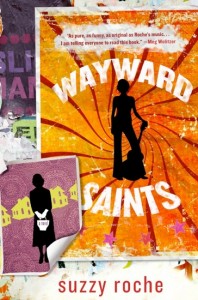 I’ve also now finished Suzzy Roche’s novel and found it to be an infectiously readable treat. I really loved it. It’s filled with wonderful characters spanning the generations and memorable situations. While Roche undoubtedly drew on her years as a traveling musician to flesh out the story, it doesn’t read as if it’s merely a novel about rock ‘n roll written by a musician; it’s a truly satisfying novel by a real writer, clearly not something that was just tossed off. Among the most striking features of it was the relationship between the musician protagonist, Mary Saint, and her mother Jean, from whom she’s long been separated. They learn how to forgive each other for past injuries. The second was the friendship between Mary Saint and her roommate Thaddeus, who becomes her confidant and motivator, able to push her to see what she’s still capable of doing.
I’ve also now finished Suzzy Roche’s novel and found it to be an infectiously readable treat. I really loved it. It’s filled with wonderful characters spanning the generations and memorable situations. While Roche undoubtedly drew on her years as a traveling musician to flesh out the story, it doesn’t read as if it’s merely a novel about rock ‘n roll written by a musician; it’s a truly satisfying novel by a real writer, clearly not something that was just tossed off. Among the most striking features of it was the relationship between the musician protagonist, Mary Saint, and her mother Jean, from whom she’s long been separated. They learn how to forgive each other for past injuries. The second was the friendship between Mary Saint and her roommate Thaddeus, who becomes her confidant and motivator, able to push her to see what she’s still capable of doing.
